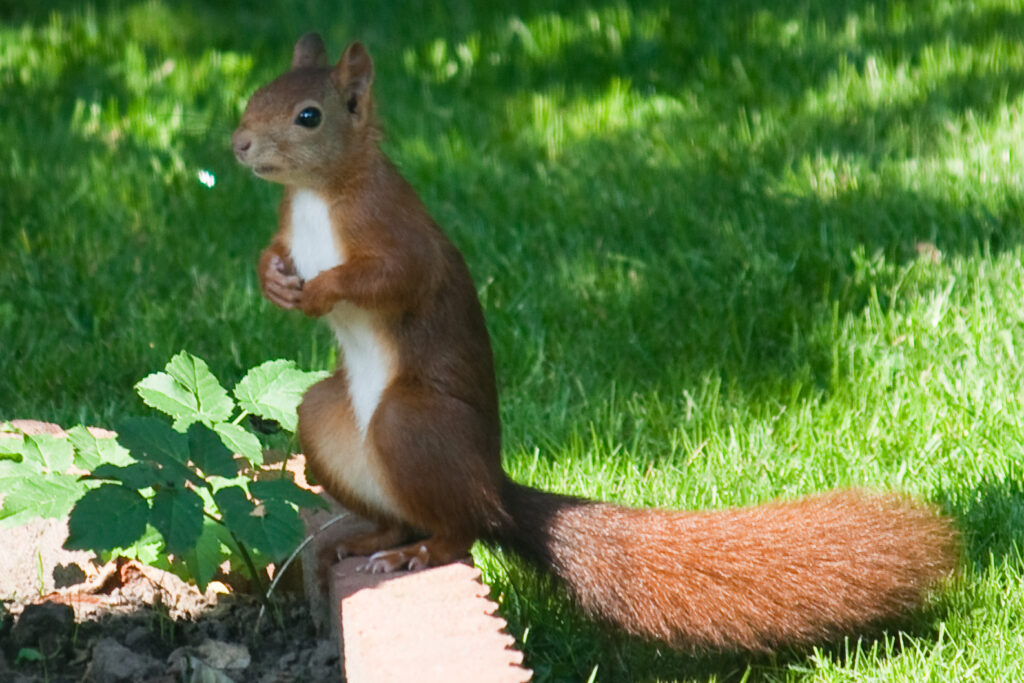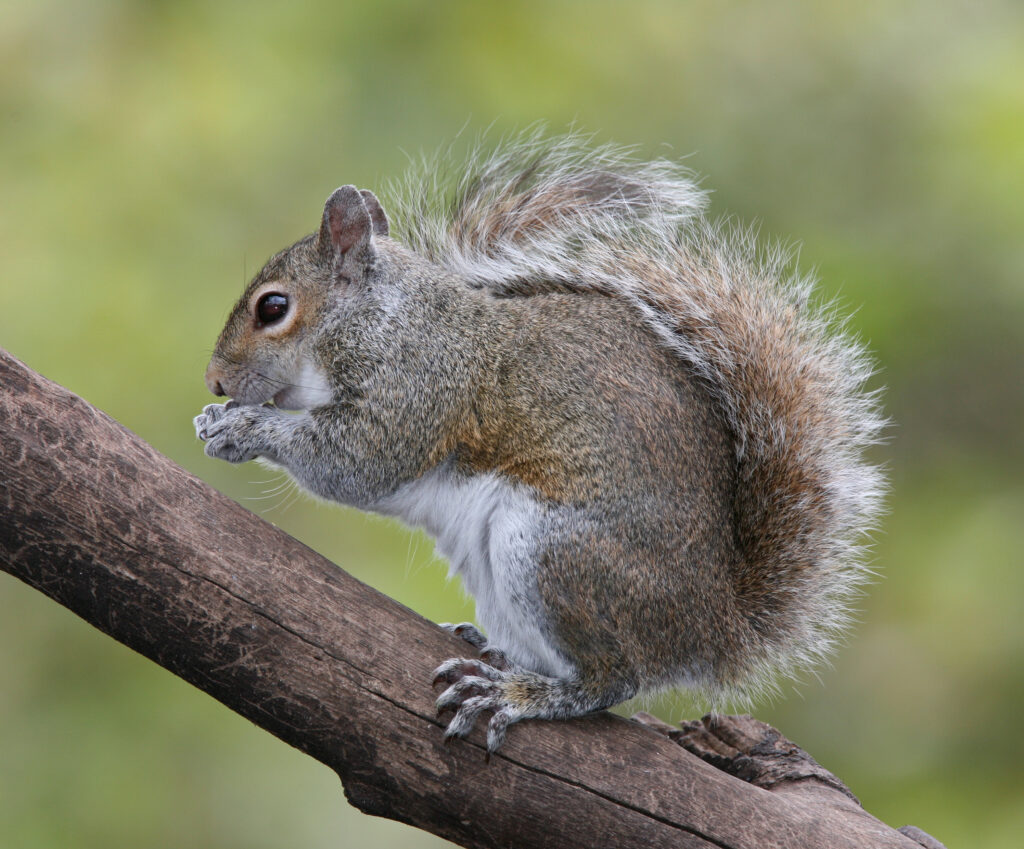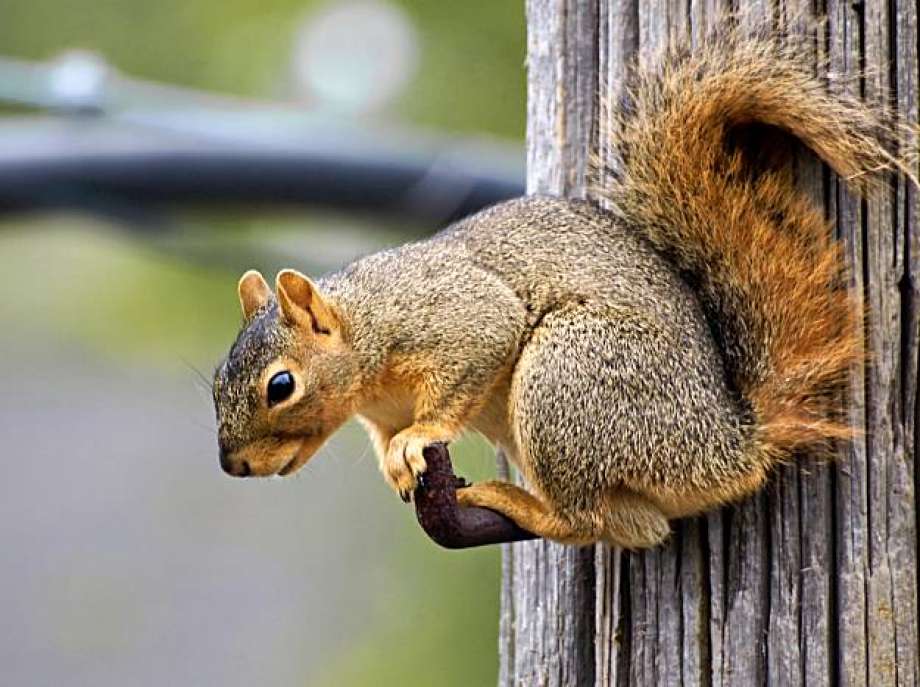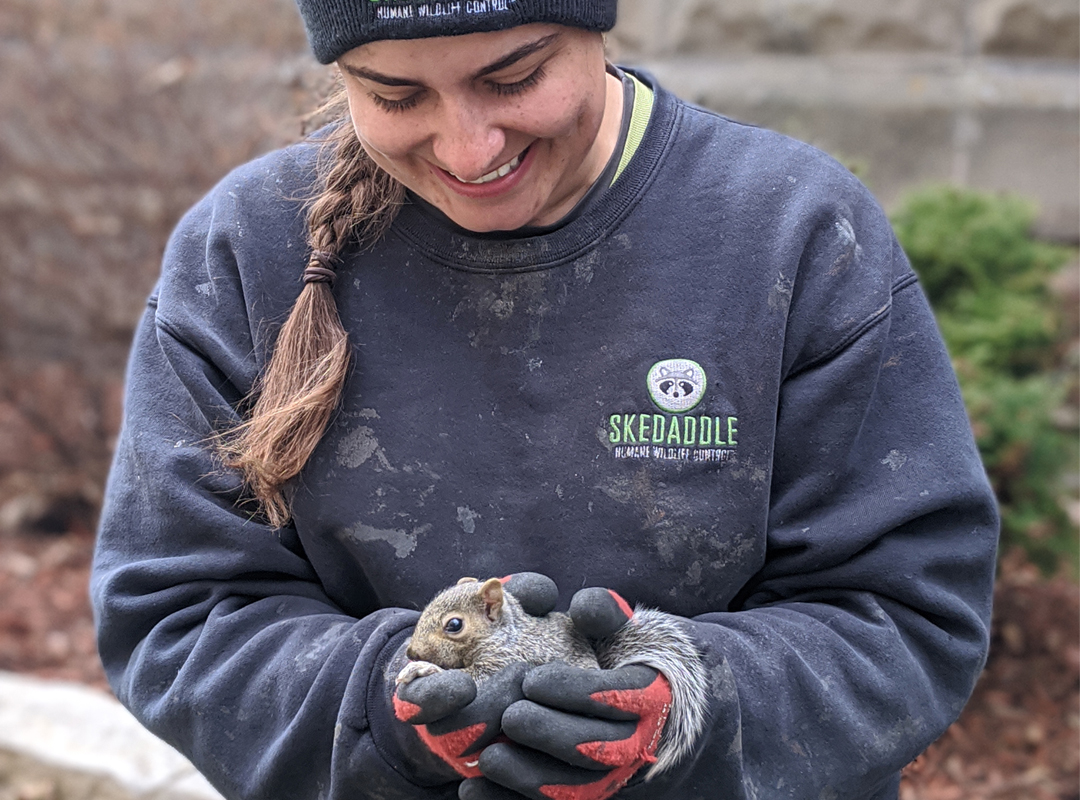There are a handful of squirrel species native to Wisconsin. Each has an important role to play in the ecosystem, but they can cause problems that require squirrel removal if they make their way into your home. What kind of squirrels live in Milwaukee? Here are three species that you are likely to encounter in parks or your backyard, though hopefully not inside your home.
1. American Red Squirrel

Being up to 14 inches long, including the tail, and weighing approximately 8 ounces, the American red squirrel is the smallest of Milwaukee’s squirrel species. Its distinctive markings include reddish-brown fur on their backs, a white belly, and a white ring around their eyes.
Though they can eat many types of food, such as berries and even bird eggs, the American red squirrel’s favorite food is seeds from coniferous trees, such as pine and spruce, so they make their homes primarily in evergreen forests. They collect as many seeds as they can and bury them to dig up later in the winter. If they don’t dig up the seeds, sometimes they germinate and produce new trees. The American red squirrel, therefore, plays an important role in propagating the forest.
American red squirrels may be small, but they have big personalities. They have been known to chase much bigger squirrels away from feeders. If they see a human in their territory, they’ll quickly climb a tree and then start chattering away to warn other animals about the perceived intruder.
2. Eastern Gray Squirrel

The easter gray squirrel is bigger than the American red squirrel, weighing up to 21 ounces and ranging up to approximately 22 inches in length. The length includes the tail, which can be especially bushy in the eastern gray squirrel.
Like the American red squirrel, the eastern gray squirrel has a white belly. The fur on its back is grayer but can have reddish undertones. Some eastern gray squirrels are so dark in color that they appear black, which appears to be a normal genetic variation.
The easter gray squirrel’s favorite foods include samaras (maple seeds), acorns, and hickory nuts, so it prefers to make its home in deciduous forests. It prefers to avoid predators by staying still against the trunk of a tree and blending into its bark or strategically moving to the other side of the tree to stay out of view. If these approaches do not work, the squirrel may make loud warning noises while twitching its tail. This is mostly posturing; the eastern gray squirrel is more sociable than the American red squirrel and rarely displays true aggression.
3. Fox Squirrel

The fox squirrel is the largest tree squirrel species, weighing approximately 2 pounds and reaching a length of nearly 30 inches, including the tail. Though as adept at climbing as any other tree squirrel, the fox squirrel actually spends most of its life foraging on the ground. It has different color variations depending on where it lives. In the western part of its range, which includes Wisconsin, the fox squirrel typically has reddish-brown fur on its belly and brownish-gray fur on its back.
Like the eastern gray squirrel, a fox squirrel’s favorite foods include acorns, hickory nuts, and walnuts. Therefore, it prefers to make its home in deciduous or mixed forests. However, fox squirrels are adaptable enough to eat many types of food, including fruit, corn, insects, and green shoots. This adaptability has enabled them to move beyond their native range into areas where they have become invasive, putting pressure on native squirrel species.
Why Should You Hire Skedaddle for Milwaukee Squirrel Removal?
Squirrels look for warm places to spend the winter or raise their babies. They may end up in human homes where they can cause widespread destruction and expose the inhabitants to diseases. Squirrel removal by Skedaddle is basically a three-step process in which we remove the squirrels, clean and decontaminate where they have been, and seal up entry points so they can’t come back.




